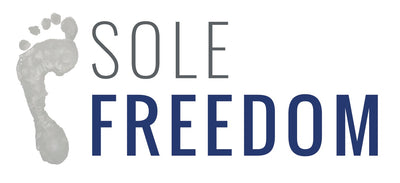Barefoot shoes, also known as minimalist or natural footwear, are rapidly becoming a preferred choice among health-conscious individuals and movement enthusiasts. But as their popularity rises, so do misconceptions. Let’s clear up the confusion and reveal the surprising truth behind barefoot shoes.
1. Myth: "Barefoot Shoes Lack Support and Are Unsafe"
This is arguably the most widespread myth surrounding minimalist shoes. The belief is that zero-drop soles and the absence of arch support make these shoes inherently dangerous. In truth, barefoot shoes are designed to promote natural foot mechanics, enabling your feet to function as they were biologically intended.
By allowing for full toe splay, ground feedback, and unrestricted foot movement, barefoot footwear helps enhance proprioception, improve posture, and reduce reliance on artificial support systems. When introduced gradually, these shoes strengthen foot muscles, improve balance, and may even reduce long-term injury risk.
2. Myth: "Barefoot Shoes Are Only for Running"
While barefoot running helped bring natural footwear into the spotlight, these shoes are not reserved for endurance athletes. Today’s barefoot shoes are engineered for everyday use—from walking and hiking to weightlifting and office wear.
Modern designs include barefoot sneakers, minimalist sandals, and business-casual barefoot loafers, offering stylish yet foot-friendly options for any setting. Whether you're trail-running or just walking the dog, there's a barefoot option to match.
3. Myth: "Only Certain Foot Types Can Wear Barefoot Shoes"
Many assume that only people with flat feet or a specific gait can benefit from minimalist footwear. However, barefoot shoes are engineered to accommodate all foot types. The key lies in reactivating the small stabilizing muscles often weakened by years of conventional shoes.
Regardless of your arch height, transitioning to barefoot shoes can foster stronger foot muscles, healthier movement patterns, and increased stability. The trick is to make the shift gradually and listen to your body as it adapts.
4. Myth: "Barefoot Shoes Are Uncomfortable or Less Durable"
Minimalist shoes might look thin, but that doesn’t mean they’re flimsy or uncomfortable. Top barefoot brands use premium materials and ergonomic design to ensure comfort and protection, even on uneven terrain.
Barefoot soles are often more durable than expected, with wear-resistant outsoles and foot-conforming uppers that enhance both longevity and comfort. They mold to your foot shape over time, reducing hotspots and improving fit.
5. Myth: "They Look Strange or Are Only for Minimalists"
Gone are the days of five-toe footwear being your only minimalist option. The barefoot shoe market has expanded to include fashion-forward, versatile designs suitable for both casual and professional settings.
From barefoot dress shoes to slip-ons and winter boots, brands now prioritize aesthetic appeal without sacrificing function. Many wearers now choose barefoot shoes for style and health.
6. Myth: "Barefoot Shoes Cause Injury"
Injuries often arise not from barefoot shoes themselves but from improper transition. Shifting from cushioned, heeled shoes to zero-drop footwear without conditioning can strain unprepared muscles.
The solution? A gradual adaptation period. Start with short, low-impact activities and increase duration as your body adjusts. Most users find improved balance, strength, and reduced discomfort once their feet adapt.
Embrace the Barefoot Movement
Far from being a fad, barefoot shoes represent a fundamental shift in how we think about foot health. By embracing natural movement, you empower your body to function more efficiently, reduce pain, and move freely.
Whether you’re new to the concept or already intrigued, giving barefoot shoes a chance—with the right transition—could dramatically change your foot health and overall well-being.
Explore Canada’s largest selection of functional barefoot footwear at Sole Freedom and take the first step toward healthier feet today.
FAQs
1. Are barefoot shoes good for plantar fasciitis? Yes, when transitioned into gradually, barefoot shoes can help strengthen the foot muscles and may reduce symptoms associated with plantar fasciitis.
2. How long does it take to adapt to barefoot shoes? Most people need 4–8 weeks of gradual transition to fully adapt. Start slow and listen to your body.
3. Can barefoot shoes be worn in winter? Yes! Many brands offer insulated and waterproof barefoot boots designed for cold climates.
4. Do barefoot shoes help with posture? Absolutely. Barefoot shoes promote proper alignment by reducing heel lift and encouraging natural gait.
5. Are barefoot shoes suitable for kids? Yes. In fact, children benefit greatly from barefoot shoes as they support natural development of the foot’s structure and strength.


Comment (1)
Hi,
Thanks for the article.
Would you mind posting your references and articles supporting the arguments made in your post?
Just want to make sure that these are evidence based arguments and not just theoretical claims.